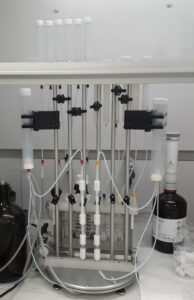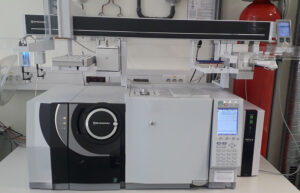Persistent pollutants dioxins, furans and their impact on the environment and human health


In accordance with the legal obligation to monitor surface waters, which is carried out by the Josip Juraj Strossmayer Water Institute, the list of priority and other pollutants for surface waters includes dioxins, furans and dioxin-like compounds such as polychlorinated biphenyls (PCBs). These compounds fall under the category of persistent organic pollutants (POPs), for which a separate international convention (the Stockholm Convention) was created to highlight their significant harm to human health and the environment. These substances remain intact in the environment for long periods of time, are geographically widespread and accumulate in the fatty tissue of humans and animals.
Dioxins and furans are unintentional by-products of industrial incinerators and industrial processes ranging from cement production to pharmaceutical processes, leather tanning and metallurgical activities. They are formed as reaction by-products in the industrial production of fungicides and herbicides. Natural sources of dioxins that are not attributable to human activities include volcanic eruptions and forest fires. Due to their physico-chemical properties such as non-flammability, chemical inertness and insulating properties, PCBs were once an integral part of products such as transformers and capacitors, electrical equipment, oils in motors and hydraulic systems, cable insulation, thermal insulation materials such as fibreglass, felt, foam and cork, adhesives and adhesive tapes, oil-based paints, sealants, plastics, floor coatings and others.
In the 1980s and early 1990s, scientific evidence was gathered on the dangers of persistent organic pollutants, with the consumption of food contaminated by POPs identified as one of the main problems, as these pollutants accumulate in the fatty tissue of humans and animals. POPs pollution can lead to the development of cancer and tumours, neurological disorders, immune system disorders, reproductive disorders and other diseases, including an increased incidence of type 2 diabetes, endometriosis, hepatitis and cirrhosis.
Awareness of the serious damage caused by persistent organic pollutants arose mainly after major environmental incidents such as the industrial accident at a chemical plant in the Italian town of Seveso in 1976, when an explosion released a large amount of dioxin (TCDD) into the air. The incident led to environmental contamination and the forced evacuation of thousands of people. A significant increase in cases of chloracne was recorded, and the long-term consequences included an increased risk of various health problems among the local population. In the Yusho (Japan) and Yu-Cheng (Taiwan) incidents, thousands of people fell ill after consuming rice oil contaminated with dioxins and polychlorinated biphenyls (PCBs). The health effects included skin lesions, liver damage, neurological disorders and, in some cases, long-term genetic consequences. During the Vietnam War, the US military used an herbicide known as Agent Orange, which was contaminated with dioxin (TCDD), to destroy forests and crops. Millions of acres of land were contaminated, and the people of Vietnam and veterans exposed to these chemicals suffered serious health problems such as cancer, birth defects and other chronic diseases.
In the last thirty years, two serious incidents have occurred in the karst areas of Slovenia and Croatia, resulting in significant PCB input into the ecological cycle of the karst environment. The first incident occurred in Slovenia, in a small town called Semič in Bela Krajina, where very high levels of PCBs were detected in nearby air, water, sediment and fish samples. Even about 200 km downstream, in the Kupa River in Croatia (which receives polluted rivers from Slovenia), PCB levels were higher compared to other rivers in Croatia. The second incident occurred when PCBs were released during the war in Croatia as a result of the destruction of part of the natural resources, infrastructure, facilities and houses in the karst area of Croatia.
Today, analyses of dioxins and dioxin-like compounds are carried out using chemical or biochemical and bioanalytical techniques. Although chemical instrumental analysis is expensive and time-consuming, it remains the most effective technique for the determination of polyhalogenated aromatic hydrocarbons.
The instrumental determination of dioxins and furans as part of the regular monitoring of surface waters in the Main Water Laboratory is carried out using mass spectrometry in conjunction with gas chromatography.
Figures 1a and 1b. Preparation of samples for instrumental analysis: solid phase extraction (SPE) and purification of persistent pollutants.

Figure 1a.

Figure 1b.

Figure 2. Instrumental analysis of dioxins and furans using gas chromatography-mass spectrometry

Figure 3. Ukrainian President Viktor Andriyovych Yushchenko before and after being poisoned with dioxins (PHOTO: researchgate.net)